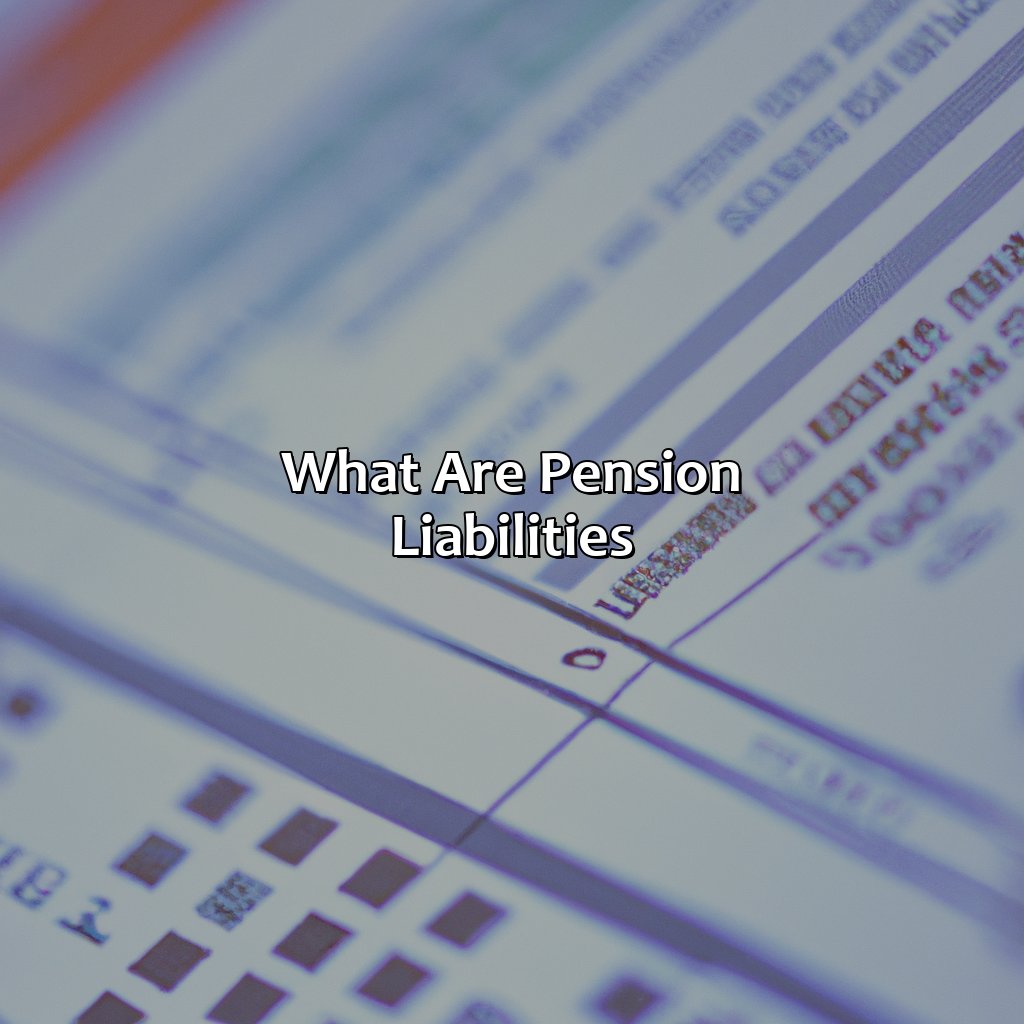What Are Pension Liabilities?
Key Takeaway:
- Pension liabilities are obligations that companies and governments have towards their employees for future pension payments based on their current and past employment.
- There are two types of pension liabilities: current pension liabilities which are due in the short-term, and projected or future pension liabilities which are due in the long-term and are based on projections of employees’ future salaries and years of service.
- Calculation of pension liabilities is done using two primary methods: actuarial cost method and projected unit credit method. The choice of method depends on the nature of the plan and the goals of the organization. Funding of pension liabilities is also an important consideration to ensure that there are sufficient funds available to meet future pension obligations.
Are you confused about what pension liabilities are and why they are important? Take a few minutes to read this article and learn how pension liabilities can affect your retirement savings. You’ll gain a better understanding of this often overlooked aspect of retirement planning.
Definition of Pension Liabilities
Pension liabilities refer to the obligation of a company to pay future retirement benefits to its employees. These benefits can include pensions, health care, and life insurance. As employees work and earn their pensions, pension liabilities increase, and companies must set aside funds to cover these future payments.
Pension liabilities are usually calculated based on actuarial assumptions such as the employee’s life expectancy, the rate of return on the assets, and the salary growth rate. These assumptions can change over time and affect the amount of money companies need to set aside. If you are wondering how does a pension loan work, it’s important to understand the concept of pension liabilities first.
It is essential for companies to manage their pension liabilities to avoid financial difficulties and ensure the future financial security of their employees. One important aspect to consider is what is a pay as you go pension plan.
A unique detail about pension liabilities is that some companies have opted to freeze their pension plans or switch to a defined contribution plan to manage their pension funds more efficiently.
In the past, some companies have struggled with underfunded pension scheme liabilities, leading to employee and retiree loss of benefits. The Pension Benefit Guaranty Corporation was established in 1974 to protect pension plan participants from such losses.
Managing pension liabilities is a crucial responsibility for companies, ensuring that employees receive the retirement benefits they have earned.
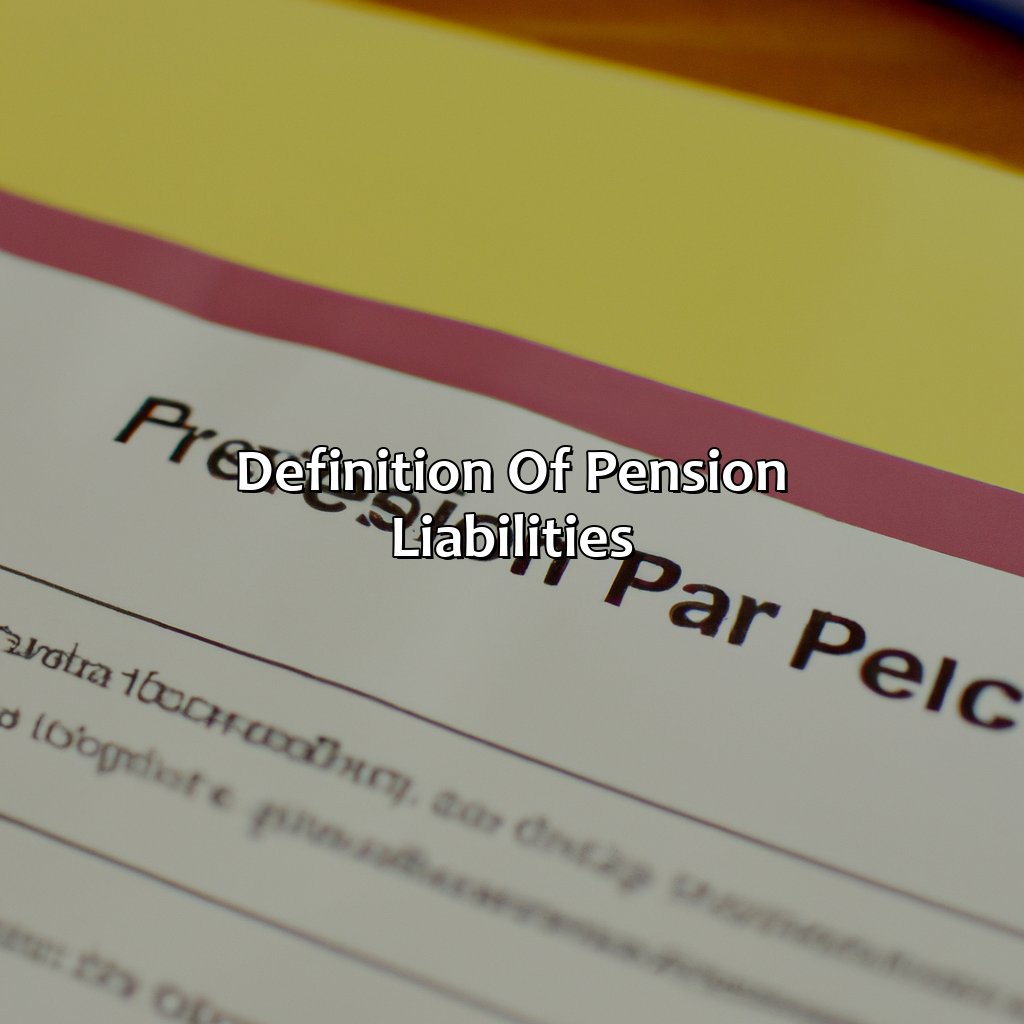
Image credits: retiregenz.com by Yuval Washington
Types of Pension Liabilities
Pension liabilities are financial obligations that a company or organization owes to its employees after retirement. These liabilities can be categorized into different types based on the nature and timing of the payment.
| Type of Pension Liability | Description |
| Defined Benefit Pension Plans | Employer promises specific retirement benefits to employees. |
| Defined Contribution Pension Plans | Employer and/or employee contributions are invested to provide retirement benefits. |
| Unfunded Pension Obligations | When future pension payments cannot be paid from the pension plan s assets and are paid from the employer’s general funds. |
It is important to note that unfunded pension obligations can pose a financial burden on companies since the burden is an additional expense paid by the company.
Apart from these types, some pension liabilities are also calculated based on various actuarial assumptions, such as life expectancy, discount rates, and the rate of return on investments. Learn more about commuted value of pension.
As these liabilities are critical for both employers and employees, it is advisable to have a regular review of the pension plan to ensure employees’ retirement benefits are secure. Failing to keep up with pension obligations can lead to potential lawsuits, financial strain, and reputation damage for the company. It’s important to understand what pension debt is and how to manage it to avoid such risks.
It is crucial for companies to understand the various types of pension liabilities they may have and take proactive steps to manage them effectively. By doing so, companies can ensure that they meet their financial obligations to their employees and avoid consequences of not doing so.
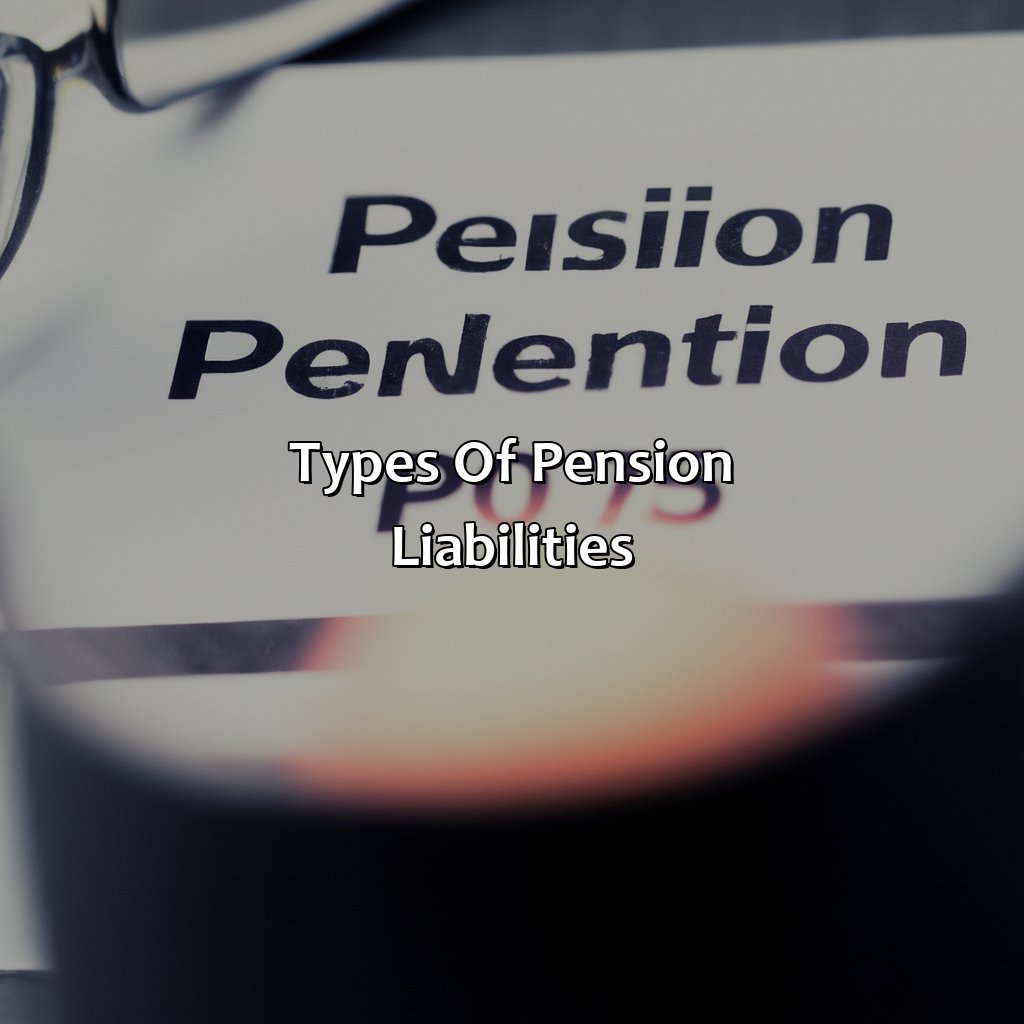
Image credits: retiregenz.com by Adam Woodhock
Methods for Calculating Pension Liabilities
Pension liabilities estimation has several approaches that vary based on the type of pension plan and assumptions used. A few common methods for pension liability calculation include Projected Benefit Obligation (PBO), Accumulated Benefit Obligation (ABO), and Uniform Pension Plan (UPP). PBO assumes the most optimistic data, while ABO is the most conservative. UPP considers the average of these two approaches.
| Methodology | Description | Advantages | Disadvantages |
|---|---|---|---|
| Projected Benefit Obligation | Estimates the pension benefit based on current salary and assumes an optimistic growth rate. | Allows for higher contributions in the future. | Can underestimate the actual pension liability. |
| Accumulated Benefit Obligation | Estimates the pension benefit based on current salary and assumes a conservative growth rate. | Reduces the impact of economic downturns. | Can result in lower contributions in the future. |
| Uniform Pension Plan | Combines both PBO and ABO methods to obtain an average liability estimate. | Takes a balanced approach. | Can still underestimate the actual pension liability. |
A common consideration when estimating pension liabilities is the long-term nature and dynamic environment of pension plans. Therefore, it is important to keep a regular check on the assumptions, data, and investments of the pension plan, to ensure an accurate estimation of pension liabilities.
To improve the accuracy of pension liability estimation, it can be helpful to use a combination of different estimation methods and assumptions. It is also crucial to have a clear understanding of the plan’s details, such as the benefit provisions, participant characteristics, and investment strategy. Regular monitoring, periodic actuarial valuation, and professional guidance can help ensure an accurate estimation of pension liabilities.
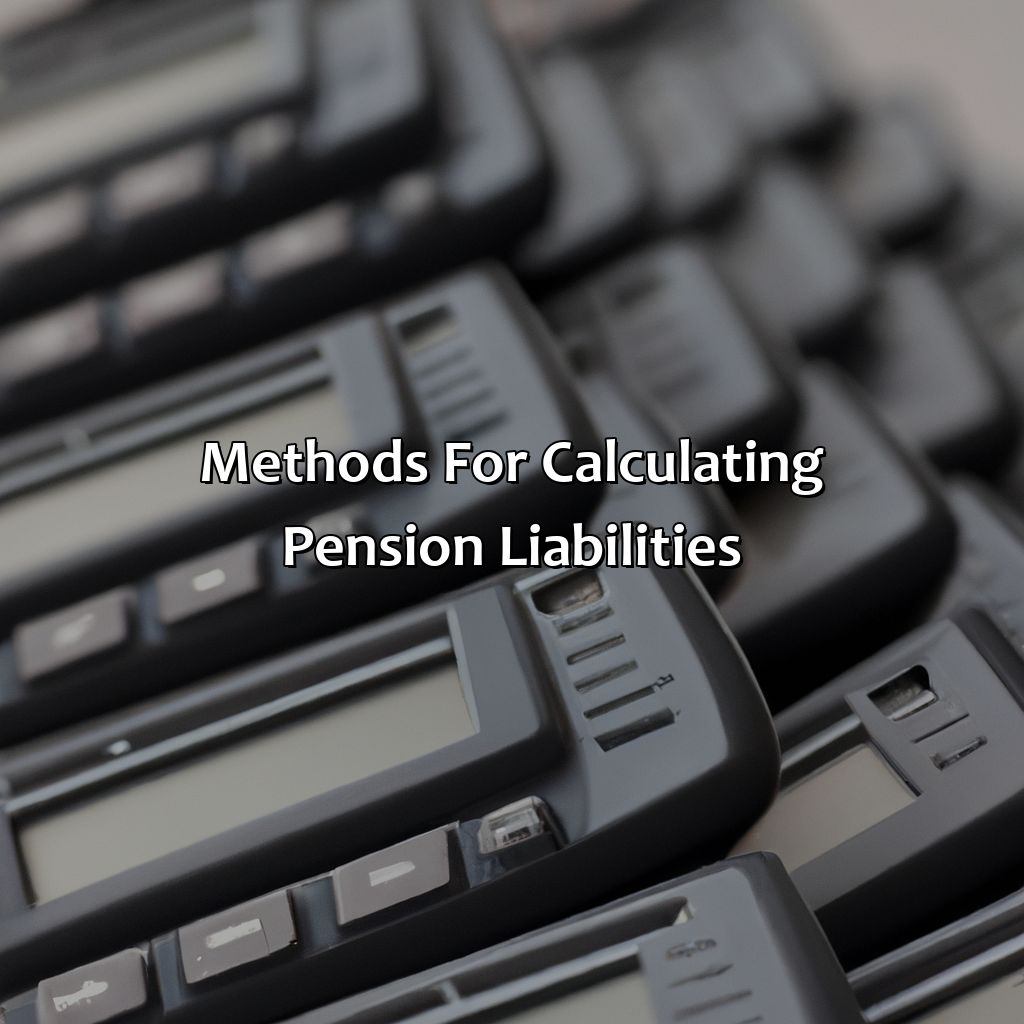
Image credits: retiregenz.com by Yuval Duncun
Funding of Pension Liabilities
Pension Liability Funding can be defined as the process of managing and funding the financial obligations of a pension plan. The funding of pension liabilities requires a comprehensive analysis of the financial status of the pension plan. The analysis involves determining the present value of the future expected cash outflows from the plan and comparing it with the present value of the plan’s assets. Based on the analysis, the plan sponsor decides how much money to contribute to the plan.
One of the key factors in funding pension liabilities is the expected rate of return on the plan’s investments. Higher expected returns reduce the amount of contributions needed to fund the plan. However, investing in riskier assets can lead to significant losses, causing a shortfall in the plan’s funding. Another important factor is the demographics of the plan participants. Plans with a larger number of older participants may need more funding as they are closer to retirement and have higher expected benefit payouts. Learn more about where pension expense is on the income statement.
It is essential to implement robust monitoring and modeling processes to ensure the proper funding and management of pension liabilities. One such strategy could be implementing liability-driven investment (LDI) strategies to stabilize the plan’s funded status. This strategy aligns the plan’s investments with its liabilities, which reduces the asset-liability mismatch risk. Another option is to adopt plan design changes that reduce the plan’s liabilities or limit benefit accruals.
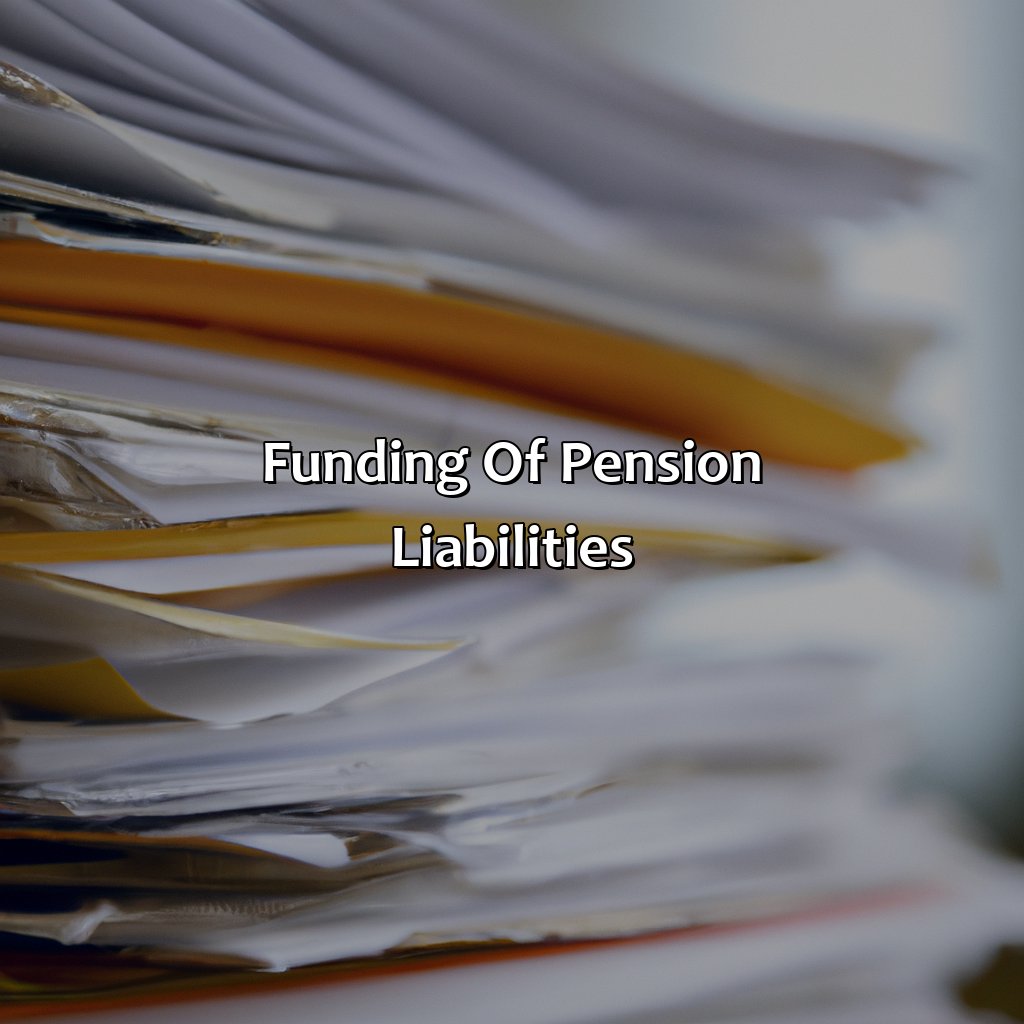
Image credits: retiregenz.com by Joel Arnold
Impact of Pension Liabilities on Companies and Governments
Pension liabilities have a significant impact on both companies and governments. They result from the obligation to pay pensions to retired employees. These liabilities can become a burden on the balance sheet and affect the overall financial health of the organization.
In the case of companies, pension liabilities can reduce profits, limit investment opportunities, and create uncertainty for stakeholders. Large pension obligations can also affect the credit ratings of the company and increase borrowing costs. Governments face similar issues, as pension liabilities can hinder their ability to finance public services and infrastructure projects. Learn more about how pensions are paid out and their impact on different entities.
Moreover, pension liabilities have a long-term impact, and their effects may not be immediately visible. Therefore, it is essential to plan and manage pension obligations strategically. Companies and governments must take measures to mitigate pension risk, such as diversifying investments, increasing pension contributions, and modifying pension plans. To understand more about managing pension liabilities and getting the most out of your pension, you can learn about pension maximization.
One suggestion is to introduce defined contribution plans, in which employees’ pensions depend on the performance of the investment portfolio. This shift from defined benefit plans can reduce the risk exposure and uncertainties associated with pension liabilities. Another effective approach is to transfer some of the pension obligations to third-party insurers or specialized pension management firms. Learn about where pension money comes from and how it can impact your retirement planning.
By proactively managing pension liabilities, companies and governments can avoid financial crises and ensure the sustainability of their pension programs. Thus, it is vital to consider pension liabilities while making financial decisions and create a long-term strategy to address the associated risks.
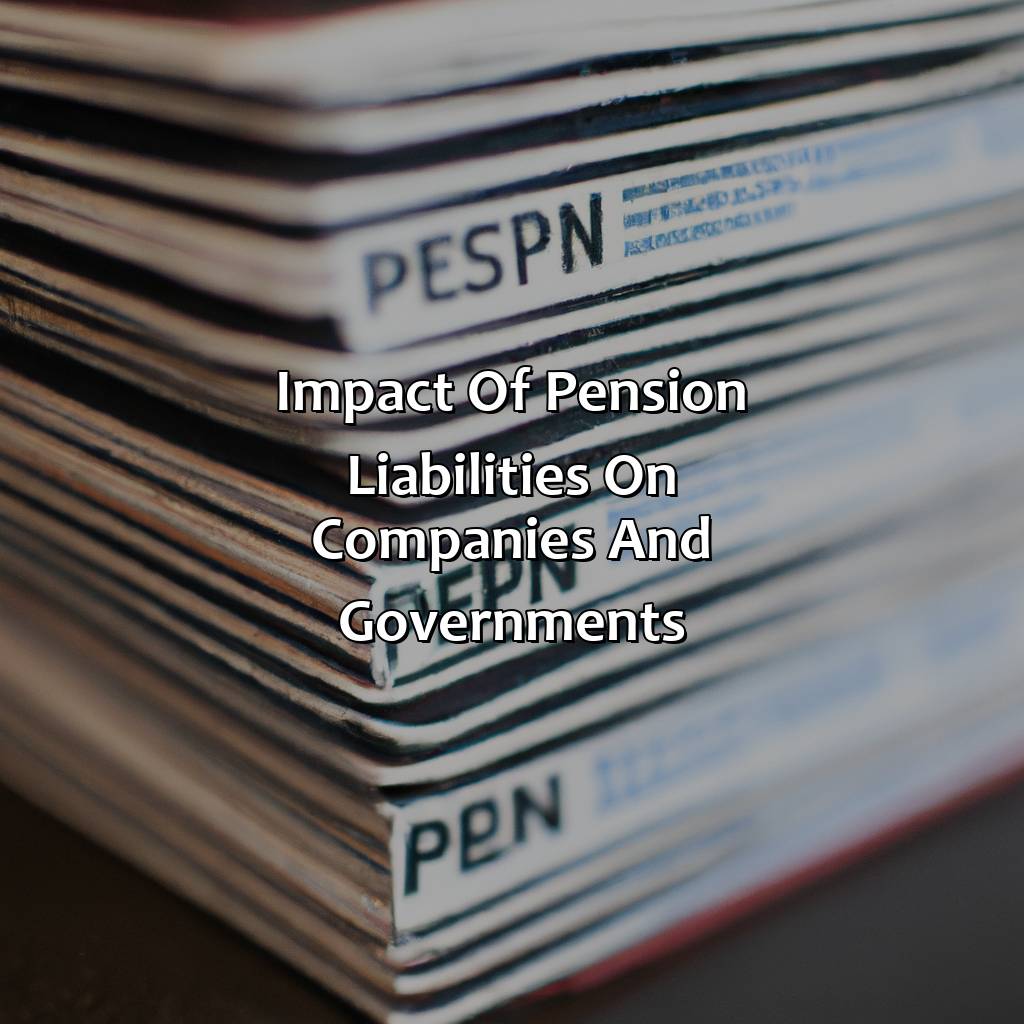
Image credits: retiregenz.com by Yuval Arnold
Some Facts About Pension Liabilities:
- ✅ Pension liabilities are obligations that a company or government has to its current and future retired employees. (Source: Investopedia)
- ✅ Pension liabilities are often calculated using actuarial methods that take into account variables such as employee demographics, projected retirement ages, and expected lifespan. (Source: Pensions & Investments)
- ✅ Pension liabilities can become a significant financial burden for companies or governments, with some facing underfunding and struggling to meet their obligations. (Source: The Balance)
- ✅ Pension liabilities can be partially or fully funded by the employer through contributions to a pension fund, but employees may also be required to contribute. (Source: Investopedia)
- ✅ Pension liabilities are often a contentious issue in collective bargaining negotiations between employers and employee unions. (Source: Forbes)
FAQs about What Are Pension Liabilities?
What are pension liabilities?
Pension liabilities refer to the financial obligations that a company or organization has to its current and former employees for their retirement benefits. These obligations can include payments for pensions, health care, life insurance, and other benefits that are promised to employees as part of their compensation package.
How are pension liabilities calculated?
There are several factors that go into calculating pension liabilities, including the age and tenure of employees, the expected rate of return on pension assets, and the assumptions made about future salary increases and retirement ages. Actuaries use these factors to determine how much money needs to be set aside each year to fund the pension plan.
Why are pension liabilities important?
Pension liabilities are important because they represent a significant financial obligation for companies and organizations. If these liabilities are not properly managed and funded, it can lead to financial instability and even bankruptcy. Additionally, pension liabilities can impact a company’s credit rating and overall financial health.
What happens if a company can’t meet its pension liabilities?
If a company is unable to meet its pension liabilities, it may need to make changes to the pension plan, such as reducing benefits or increasing employee contributions. In extreme cases, the company may need to declare bankruptcy and the pension plan may need to be taken over by a government agency.
How do pension liabilities affect employees?
Pension liabilities can have a significant impact on employees, particularly those who are currently retired or nearing retirement. If a company is unable to meet its pension obligations, it may result in reduced benefits or even a complete loss of retirement benefits. Additionally, employees may need to contribute more to the pension plan to help make up for any funding shortfalls.
What can employees do to protect their pension benefits?
Employees can take several steps to protect their pension benefits, including staying informed about the financial health of their company’s pension plan, advocating for proper funding and management of the plan, and diversifying their retirement savings by investing in other retirement vehicles such as 401(k) plans and individual retirement accounts (IRAs).
